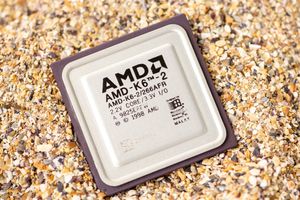
Redwood Shores, CA – October 7, 2025 – Oracle Corporation (NYSE: ORCL) experienced a sharp decline in its stock value today, tumbling between 4.36% and over 6%, as investors grappled with revelations of unexpectedly thin profit margins within its burgeoning, Nvidia-powered artificial intelligence (AI) cloud business. This significant downturn follows a period of robust growth for the tech giant, which saw its shares reach an all-time high just weeks prior, fueled by massive AI infrastructure deals and an aggressive push into the high-demand AI compute market.
The plummet signals a critical inflection point for Oracle, highlighting growing investor skepticism about the long-term profitability of the capital-intensive AI infrastructure race. While the company has successfully secured monumental contracts, including a reported $300 billion, five-year agreement with OpenAI, the high cost of acquiring and deploying advanced Nvidia (NASDAQ: NVDA) GPUs, coupled with aggressive pricing strategies to attract major clients, appears to be severely compressing margins and raising questions about the financial viability of its "AI supermarket" approach.
The Cost of Innovation: Oracle's AI Cloud Margins Under Scrutiny
The immediate catalyst for Oracle's stock decline on October 7, 2025, was a widely circulated report, initially from The Information, detailing the razor-thin profit margins of its Nvidia-backed cloud services. According to internal documents cited in the report, Oracle's Nvidia cloud business generated approximately $900 million in sales during the three months ending August 2025, yet achieved a gross margin of only 14%. This starkly contrasts with Oracle's overall gross margin of around 70% for its traditional, highly profitable software business, revealing a significant disparity in profitability. Alarmingly, the report also indicated that the company was reportedly incurring nearly $100 million in losses from renting out access to Nvidia's high-performance Blackwell chips during this period, and in some instances, even losing money on smaller rentals of both newer and older Nvidia chips.
This recent downturn follows a dramatic September 2025 rally where Oracle's stock surged by 24.4%, jumping nearly 40% on September 9 alone, propelled by the disclosure of a staggering $455 billion in "remaining performance obligations" (RPO) in its fiscal Q1 2026 earnings report. The OpenAI deal was a significant contributor to this RPO increase, painting a picture of overwhelming demand for Oracle's AI compute capacity. However, leading up to the October 7 plummet, the stock had already pulled back 16% from its peak as concerns mounted over Oracle's ability to finance its extensive data center build-out, especially given nearly $6 billion in negative free cash flow over the preceding four quarters. The company had issued $18 billion in debt in September to help fund this ambitious expansion, further underscoring the capital intensity of its AI strategy.
The core issue lies in the exorbitant cost of Nvidia's H100 and H200 GPUs, which are indispensable for advanced AI training and development. These chips, along with the substantial power consumption required to operate them, represent a massive capital expenditure for cloud providers. Oracle's strategy to position itself as a "neutral AI supermarket" – providing essential infrastructure to AI powerhouses like OpenAI rather than developing its own AI models – has indeed secured massive contracts. However, to win these deals, Oracle has reportedly offered significant discounts on GPU rental prices compared to its standard listed rates, further eroding the already tight margins. This aggressive pricing, coupled with the high acquisition and operational costs of Nvidia chips, is proving challenging to translate into the high returns investors have come to expect from the software giant.
Shifting Fortunes: Winners and Losers in the AI Infrastructure Race
The recent events surrounding Oracle (NYSE: ORCL) underscore the complex dynamics of the AI infrastructure market, creating potential winners and losers. Oracle, while securing massive AI cloud contracts, is clearly facing a challenge in translating these into substantial, profitable revenue growth. The thin margins reported for its Nvidia-powered cloud business suggest that its aggressive "AI supermarket" strategy, though effective in capturing market share and RPO, is proving to be a highly capital-intensive endeavor with lower immediate profitability than its traditional software segments. This could pressure Oracle to either re-evaluate its pricing, seek more favorable terms for GPU procurement, or find innovative ways to optimize its data center operations to improve margins. A sustained period of low profitability in its cloud division could impact investor confidence and its ability to fund future expansion without further debt.
On the other hand, Nvidia (NASDAQ: NVDA) continues to stand as a primary beneficiary in this scenario, at least in the short term. The high cost and immense demand for its H100 and Blackwell GPUs are precisely what are squeezing Oracle's margins. As long as Nvidia maintains its dominant position in the AI chip market, it can command premium prices, directly contributing to the profitability challenges faced by cloud providers like Oracle. However, if cloud providers find AI infrastructure to be consistently unprofitable, it could eventually lead to a slowdown in their purchasing of new GPUs, which could then indirectly affect Nvidia in the long run. Other major cloud providers, such as Amazon Web Services (AWS) (NASDAQ: AMZN), Microsoft Azure (NASDAQ: MSFT), and Google Cloud (NASDAQ: GOOGL), are also investing heavily in AI infrastructure. While they might face similar margin pressures, their diversified revenue streams and potentially larger scale or different strategic approaches could offer some insulation. Companies developing their own AI chips, like Google with its TPUs or Amazon with its Trainium/Inferentia, could gain a competitive edge by reducing reliance on external, high-cost GPU suppliers.
Broader Implications and Industry Ripple Effects
Oracle's margin woes in its AI cloud business are not an isolated incident but rather a potent signal of broader industry trends and challenges in the rapidly expanding AI sector. This event underscores the intense competition among cloud providers to capture the lucrative AI compute market, often at the expense of immediate profitability. The race to build out massive AI infrastructure, driven by unprecedented demand from AI developers and enterprises, is proving to be incredibly capital-intensive. This trend could lead to a consolidation in the cloud market, favoring only the largest players with deep pockets who can sustain periods of lower margins, or those who can innovate to reduce infrastructure costs. Smaller cloud providers or those solely focused on AI infrastructure might struggle to compete if profitability remains elusive.
The situation also highlights the significant leverage held by key hardware providers like Nvidia. The reliance on specialized, high-performance GPUs for AI training and inference creates a bottleneck, allowing chip manufacturers to dictate pricing. This dynamic could spur increased investment in alternative AI hardware solutions, including custom silicon development by tech giants or the emergence of new chip architectures from startups. Regulatory bodies might also begin to scrutinize the market dominance of certain hardware providers if it leads to anti-competitive practices or stifles innovation due to prohibitive costs. Historically, periods of rapid technological advancement often see initial low margins as infrastructure is built out, followed by increased profitability as economies of scale are achieved and technologies mature. However, the current situation suggests that the "land grab" phase for AI compute might be more financially challenging than anticipated, potentially drawing comparisons to the dot-com bubble era where infrastructure build-out outpaced sustainable revenue generation.
The Road Ahead: Navigating the AI Profitability Conundrum
Looking ahead, Oracle's immediate focus will likely be on demonstrating a clear path to improved profitability within its AI cloud division. In the short term, this could involve a strategic re-evaluation of its pricing models, potentially shifting away from aggressive discounts for all clients, or implementing more tiered service offerings. The company might also explore further optimizations in its data center operations, focusing on energy efficiency and better utilization of its Nvidia GPU clusters to reduce operational overheads. Investors will be closely watching Oracle's upcoming earnings reports for any signs of margin improvement or clearer guidance on the profitability trajectory of its AI cloud business. Failure to address these concerns could lead to continued stock volatility and investor apprehension.
In the long term, Oracle may need to strategically pivot or adapt its "AI supermarket" model. This could involve exploring partnerships or acquisitions that enhance its proprietary AI software offerings, thereby creating higher-margin value-added services on top of its raw compute infrastructure. Another possibility is a deeper collaboration with Nvidia or other chip manufacturers to secure more favorable pricing or develop custom solutions that are more cost-effective. The market opportunities that emerge from this situation include increased demand for AI cost optimization tools and services, as well as greater investment in open-source AI models and frameworks that can run efficiently on a wider range of hardware, reducing reliance on expensive proprietary solutions. The challenge for Oracle, and indeed for the entire cloud industry, will be to balance the imperative of meeting exploding AI demand with the necessity of generating sustainable, attractive returns for shareholders.
A Critical Juncture for Cloud AI
Oracle's recent stock plummet and the underlying concerns about AI cloud profitability mark a critical juncture for the company and the broader technology sector. The event underscores a fundamental tension: the immense demand for AI compute capacity versus the high capital and operational costs associated with delivering it, particularly when reliant on premium hardware like Nvidia GPUs. While Oracle has successfully positioned itself at the heart of the AI revolution through massive infrastructure deals, the immediate takeaway is that securing market share in the AI cloud is not synonymous with immediate, robust profitability.
Moving forward, the market will closely assess how Oracle (NYSE: ORCL) and its competitors navigate this profitability conundrum. Key indicators for investors to watch in the coming months include Oracle's future earnings reports, specifically focusing on cloud gross margins and free cash flow. Any strategic announcements regarding pricing adjustments, operational efficiencies, or new value-added AI services will be crucial. The lasting impact of this event could be a more pragmatic approach to AI infrastructure investment across the industry, with a stronger emphasis on sustainable business models rather than just raw capacity growth. This content is intended for informational purposes only and is not financial advice





